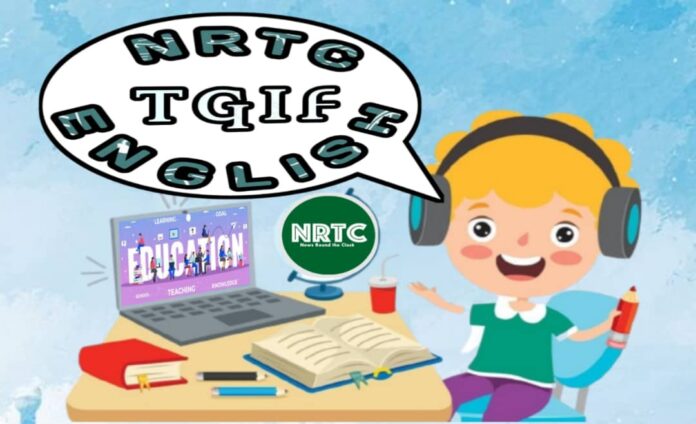Estimated reading time: 6 minutes
In the Senior Secondary Certificate Examination (SSCE) and the West African Senior School Certificate Examination (WASSCE), one of the common questions in comprehension passages involves identifying the grammatical names and functions of specific words, phrases, or clauses. This question, which usually carries 3 marks out of the total 20 marks in the comprehension section (1 mark for grammatical name and 2 marks for grammatical function), tests your understanding of grammar and your ability to analyze how different parts of a sentence work.
In today’s NRTC English, I have explained how to identify grammatical names and functions in SSCE/WASSCE, with several examples from short comprehension passages.
Table of contents
What Are Grammatical Names and Functions?
When we talk about grammatical names, we are referring to what a particular word, phrase, or clause is called based on its structure. For example, a phrase can be called a noun phrase, while a clause can be an adverbial clause.
On the other hand, the grammatical function refers to the role that a particular word, phrase, or clause plays within the sentence. For instance, a noun phrase can function as the subject or object in a sentence, and a clause might function as the complement or modifier.
To understand how this works in comprehension passages, let’s break it down into three steps:
1. Identifying Grammatical Names
Grammatical names refer to the type or category of a word, phrase, or clause. Here are the common grammatical names you will encounter in comprehension passages:
- Noun Phrases: A group of words that act like a noun. It includes a noun and its modifiers (e.g., “The tall boy”).
- Verb Phrases: A group of words that act as the verb in a sentence (e.g., “is running,” “have eaten”).
- Adjective Phrases: A group of words that describe a noun or pronoun (e.g., “extremely tired,” “very happy”).
- Adverbial Phrases: A group of words that modify a verb, an adjective, or another adverb (e.g., “in the morning,” “with great care”).
- Prepositional Phrases: A group of words that start with a preposition and end with a noun or pronoun (e.g., “under the table,” “after the game”).
Similarly, clauses can be:
- Noun Clauses: A clause that acts like a noun (e.g., “What he said surprised me”).
- Adjectival/Relative Clauses: A clause that modifies a noun (e.g., “The book that you gave me”).
- Adverbial Clauses: A clause that modifies a verb, an adjective, or another adverb (e.g., “Because she was late, she missed the bus”).
2. Identifying Grammatical Functions
The grammatical function refers to the role or job that a word, phrase, or clause performs in a sentence. Here are some key grammatical functions you will come across:
- Subject: The noun, noun phrase, or noun clause that performs the action in a sentence (e.g., “The teacher explained the lesson”).
- Object: The noun, noun phrase, or noun clause that receives the action of the verb (e.g., “She kicked the ball”).
- Complement: This provides more information about the subject or object. It can be a noun phrase, adjective phrase, or clause (e.g., “She is a doctor”).
- Modifier: A word, phrase, or clause that gives more information about another word. Adjective phrases modify nouns, and adverbial phrases modify verbs (e.g., “The tall girl,” “She ran quickly”).
ALSO READ
3. Applying This to SSCE/WASSCE Comprehension Passages
Let’s take a short comprehension passage and analyze how to identify grammatical names and functions.
Passage:
“The boy who won the race was overjoyed. After the race, he thanked his coach for training him so well.”
From this passage, we can be asked to identify the grammatical name and function of certain words or phrases. Let’s take a look at two examples:
Example 1: Identifying a Grammatical Name
“The boy who won the race was overjoyed.”
If the question is: “Identify the grammatical name of the phrase ‘who won the race.’”
- Grammatical Name: This phrase is a relative clause (also known as an adjectival clause) because it describes the noun “boy.”
Example 2: Identifying a Grammatical Function
“After the race, he thanked his coach for training him so well.”
If the question is: “Identify the function of the phrase ‘After the race.’”
- Grammatical Function: This phrase functions as an adverbial phrase of time because it tells us when the action of thanking happened.
More Examples for Clarity
Let’s work through more examples to ensure full understanding.
Example 3: Noun Phrases and Their Function
“The tired old man sat down on the bench.”
- Grammatical Name: “The tired old man” is a noun phrase because it contains the noun “man” and its modifiers “tired” and “old.”
- Grammatical Function: The noun phrase functions as the subject of the sentence because it is the person doing the action of sitting down.
Example 4: Adverbial Clauses and Their Function
“She left the party because she was tired.”
- Grammatical Name: “Because she was tired” is an adverbial clause because it gives a reason for why she left.
- Grammatical Function: The clause functions as an adverbial clause of reason because it explains why the action happened.
Example 5: Prepositional Phrases and Their Function
“The cat slept under the chair.”
- Grammatical Name: “Under the chair” is a prepositional phrase because it begins with the preposition “under” and ends with the noun “chair.”
- Grammatical Function: This prepositional phrase functions as an adverbial phrase of place because it tells us where the cat slept.
Common Challenges and Tips
Students often struggle with identifying grammatical names and functions because they confuse the two. To avoid this confusion, remember these key tips:
- Grammatical Name focuses on the structure: Is it a noun phrase, adjective phrase, or clause?
- Grammatical Function focuses on the role: Is it acting as the subject, object, or modifier?
When you are unsure about the function, ask yourself: What is this word, phrase, or clause doing in the sentence? For example, if a noun phrase is telling you who is performing the action, it’s the subject.
Practice Passage:
“The young girl who lives next door sings beautifully. She practices her singing every day before school.”
- Can you identify the grammatical name and function of the phrase “who lives next door”?
- Answer: The grammatical name is a relative clause (adjectival clause), and its function is to modify the noun “girl.”
- What about the phrase “before school”?
- Answer: The grammatical name is a prepositional phrase, and its function is an adverbial phrase of time (it tells us when she practices singing).
Understanding grammatical names and functions in SSCE/WASSCE comprehension passages can seem tricky at first, but with consistent practice and careful analysis, you can master it. Always start by asking yourself: What type of word, phrase, or clause is this? (Grammatical name) and then What role does it play in the sentence? (Grammatical function). With these steps in mind, you will be able to answer these types of questions confidently in your exams.



